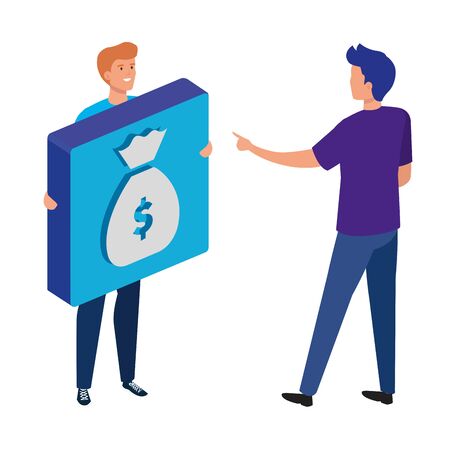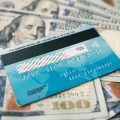1. Understanding the Envelope Budgeting Method
Envelope budgeting is a simple, hands-on way to manage your money that’s been around for generations in America. The idea is straightforward: you use cash and physical envelopes to allocate your income for specific spending categories like groceries, gas, eating out, or entertainment. This method helps you stay on track by making sure you don’t spend more than you have set aside for each expense.
Why Envelope Budgeting Works
Envelope budgeting works because it limits your spending to what you actually have. Instead of swiping a card or making online payments where its easy to lose track, you only spend what’s in each envelope. When the envelope is empty, you stop spending in that category until your next payday. This method can be especially helpful in American culture, where digital payments are common and overspending is easy.
Benefits of Envelope Budgeting for Americans
- Visual Spending Control: Physically seeing your cash decrease with each purchase makes your spending real and tangible.
- Prevents Overspending: You literally cannot spend more than what’s in your envelope.
- Encourages Mindful Purchases: Knowing you have a set amount makes you think twice before making impulse buys.
- Customizable Categories: You can tailor envelopes to fit your lifestyle—whether it’s coffee runs, pet care, or weekend getaways.
How Envelope Budgeting Helps Regain Control
Many Americans find themselves struggling with credit card debt or living paycheck to paycheck. With envelope budgeting, you’re using cash instead of credit, which keeps your finances grounded in reality. It also forces you to plan ahead and make intentional decisions about every dollar you earn.
Example: Setting Up Your Envelopes
| Category | Monthly Amount | Description |
|---|---|---|
| Groceries | $400 | All food purchased for home cooking |
| Gas/Transportation | $150 | Fuel, bus passes, ride-sharing costs |
| Eating Out | $100 | Coffee shops, takeout, dining at restaurants |
| Entertainment | $75 | Movies, concerts, streaming services |
| Miscellaneous | $50 | Unplanned expenses or small treats |
The Bottom Line on Getting Started
If you’re tired of wondering where your money goes every month, the envelope budgeting method is a practical tool that puts you back in control. By handling cash and allocating funds for each category upfront, you’ll build better habits and gain peace of mind knowing exactly how much you have left to spend.
2. Getting Started: Setting Up Your Envelope System
Choosing Between Physical and Digital Envelopes
The first step in envelope budgeting is deciding whether you want to use physical cash envelopes or a digital envelope system. Both methods can help you stick to your budget, but the right choice depends on your lifestyle and comfort with technology.
Physical Envelopes
- Great for: People who prefer using cash and like seeing their money in real time.
- How it works: Label paper envelopes with spending categories, then put the exact amount of cash you’ve budgeted for each category inside at the start of the month.
Digital Envelopes
- Great for: People who pay most bills online or want to track spending on their phone or computer.
- How it works: Use apps like Goodbudget or Mvelopes to create virtual envelopes. Allocate funds digitally and track your expenses as you go.
Selecting Your Budget Categories
Your envelopes should reflect common U.S. household expenses. Here’s a table of typical categories to get you started:
| Category | Examples of Expenses |
|---|---|
| Groceries | Food, beverages, household supplies |
| Rent/Mortgage | Monthly housing payment |
| Utilities | Electricity, water, gas, internet |
| Transportation | Gas, car payments, public transit fares, insurance |
| Dining Out | Coffee shops, restaurants, takeout |
| Health & Wellness | Medical bills, prescriptions, gym memberships |
| Personal Care | Haircuts, toiletries, skincare products |
| Savings/Investments | Emergency fund, retirement accounts, investments |
| Entertainment & Recreation | Movies, streaming services, hobbies, sports events |
| Miscellaneous | Unexpected expenses or one-off purchases |
Determining Your Monthly Income
You need to know exactly how much money you have available each month before assigning amounts to your envelopes. For most people in the U.S., this means calculating your net income (the amount you take home after taxes and deductions).
Steps to Calculate Monthly Income:
- Add up all sources of income: salaries, side gigs, child support, government benefits, etc.
- If your paychecks are biweekly or weekly, multiply by the number of pay periods per month (usually 2 or 4) to find your monthly total.
- If your income varies from month to month (like freelancers), use an average from the last three to six months as your starting point.
This monthly income number becomes the foundation for dividing up cash into your chosen envelope categories. Be sure not to allocate more than what you actually bring home—otherwise you’ll risk running out of money before the month ends!
Once you have these basics set up—choosing your envelope method, picking realistic categories based on American household norms, and knowing your monthly income—you’re ready to move forward with filling those envelopes and taking control of your finances.

3. Filling Your Envelopes: Allocating Funds Each Paycheck
Now that you’ve labeled your envelopes and know your spending categories, it’s time to put the envelope budgeting system into action with every paycheck. This step is all about making sure the essentials are covered before anything else—so you’re never caught short when it comes to rent, groceries, or gas.
Prioritizing Your Expenses
When you receive your paycheck, start by listing out your most important expenses. These usually include:
- Rent or mortgage
- Utilities (electricity, water, internet)
- Groceries
- Transportation (gas, bus pass)
- Insurance
After these basics are set aside, you can allocate funds to other categories like entertainment, dining out, or shopping.
Sample Paycheck Breakdown Table
| Category | Monthly Budget | Per Paycheck (Biweekly Example) |
|---|---|---|
| Rent | $1,200 | $600 |
| Groceries | $400 | $200 |
| Gas/Transportation | $120 | $60 |
| Utilities | $150 | $75 |
| Entertainment | $100 | $50 |
| Savings | $200 | $100 |
| Total Per Paycheck | – | $1,085 |
This table shows how you might split up a biweekly paycheck across your envelopes. Adjust the numbers based on your actual income and expenses.
The Envelope-Filling Routine
- Cash your paycheck or withdraw the planned amount from your bank account.
- Fill each envelope with the designated cash amount for that pay period.
- If you have extra left after covering essentials, you can choose to increase savings or boost an envelope like “Dining Out” or “Fun.”
- If you run short in a category before the next payday, resist borrowing from another envelope—this keeps your spending in check.
Avoiding Temptation with Discretionary Spending
The beauty of the envelope system is it helps prevent overspending on non-essentials. Once the “Entertainment” or “Shopping” envelope is empty, that’s it until your next paycheck refills it. This simple limit encourages mindful choices and helps build healthy financial habits over time.
4. Staying on Track: Tips for Managing and Adjusting Your Budget
Strategies to Stick with Your Envelope Budget
The envelope budgeting system can be a powerful tool, but staying consistent takes practice and a few smart strategies. Here are some easy-to-follow tips:
- Track Your Spending Regularly: Check your envelopes at least once a week. This helps you see where your money is going and spot any problem areas early.
- Use Digital or Physical Envelopes: Some people prefer cash in real envelopes, while others use apps like Goodbudget or Mvelopes to keep things digital. Pick what fits your lifestyle.
- Set Realistic Amounts: Make sure each envelope has enough to cover your real needs, not just ideal numbers. Review your past spending for accuracy.
- Involve the Family: If you share finances, make sure everyone knows how the system works and agrees on the rules.
Troubleshooting: What if You Run Out of Cash in an Envelope?
It happens! Here’s what you can do if you run low before payday:
| Situation | Suggested Action |
|---|---|
| Ran out in one category (e.g., dining out) | No more spending in that category until refill day OR move money from a less important envelope (like entertainment) if absolutely needed. |
| Repeatedly running out in the same category | Review your budget and spending patterns. Consider increasing the amount next month by reducing another less essential envelope. |
| An emergency expense pops up | If it cant wait, borrow from another envelope or use your emergency fund. Remember to adjust next month’s plan accordingly. |
Handling Irregular Expenses Common in American Life
Irregular expenses—like car repairs, annual subscriptions, back-to-school shopping, or holiday gifts—can throw off even the best budget. Here’s how to prepare:
- Create Special “Irregular” Envelopes: Label envelopes for things like “Car Maintenance,” “Medical Copays,” or “Holiday Shopping.” Add a small amount to these every paycheck.
- Estimate Annual Costs: Write down all expected irregular expenses for the year, divide by 12, and save that amount monthly. For example:
| Expense Type | Total Yearly Cost | Savings Per Month |
|---|---|---|
| Car Repairs & Maintenance | $600 | $50 |
| Holiday Gifts | $480 | $40 |
| Back-to-School Supplies | $240 | $20 |
| Total Monthly Savings Needed | $110 |
- Pile Up Small Amounts Over Time: Even $10-$20 a paycheck adds up and makes big bills easier to handle when they come due.
- Avoid Using Credit Cards for Irregulars: When possible, pay from your special envelopes instead of relying on debt.
5. Going Digital: Envelope Budgeting Apps and Modern Solutions
If you love the idea of envelope budgeting but want something more convenient than carrying around cash-filled envelopes, you’re not alone! Many Americans are turning to digital solutions that make money management easier and more secure. Let’s explore how you can use technology to master envelope budgeting and keep your finances organized without the hassle.
Why Go Digital with Envelope Budgeting?
Digital envelope budgeting apps let you allocate funds into virtual “envelopes” for different spending categories—just like the traditional method, but everything happens on your phone or computer. This way, you can track your money in real time, get instant updates, and avoid overspending without dealing with physical cash.
Popular Digital Envelope Budgeting Apps in the U.S.
| App Name | Main Features | Best For |
|---|---|---|
| You Need a Budget (YNAB) | Real-time syncing, goal tracking, detailed reports | Hands-on planners who want deep insight |
| Goodbudget | Simple digital envelopes, easy sharing with family | Couples & families managing shared expenses |
| Mvelopes | Automated transactions, customizable envelopes | People new to budgeting apps |
| EveryDollar | User-friendly design, drag-and-drop budgeting | Anyone wanting a straightforward approach |
Blending Traditional Methods with New Tools
If you already use paper envelopes or spreadsheets, moving to a digital system doesn’t mean starting over. Most apps allow you to set up categories just like your old envelopes. You can even combine both methods—use cash envelopes for things like groceries or dining out, and digital envelopes for online shopping or bills.
Tips for Seamless Money Management:
- Start Small: Try one app and see how it works with your routine before switching fully.
- Sync Accounts: Connect your bank and credit card accounts for automatic tracking.
- Set Notifications: Get alerts when you’re close to your spending limits so there are no surprises.
- Review Regularly: Check in every week to make sure your digital envelopes match your spending habits.
The Bottom Line on Digital Envelope Budgeting Apps
Ditching paper for digital doesn’t mean losing control—it actually gives you more tools to stay on top of your budget. By choosing an app that fits your lifestyle, you’ll find it easier than ever to organize your finances and stick to your goals—all while using language and tools familiar across America!


